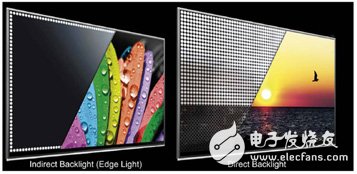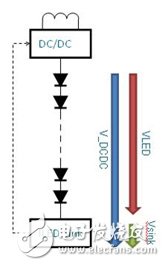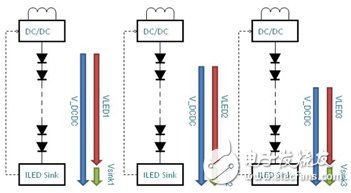According to the Super-efficient Equipment and Appliance Deployment (SEAD) plan, 3-8% of global household electricity consumption is generated by TVs. Fortunately, an analysis report by Lawrence Berkeley National Laboratory (Lawrence Berkeley NaTIonal Laboratory) pointed out that technological improvements, such as more efficient LED drivers, will significantly reduce the power consumption of TVs in the coming days.
There is no doubt that LCD technology using LED backlighting is the only viable method to help manufacturers achieve the energy efficiency goals required by the government. The disadvantage of plasma TVs is that each pixel is an active light emitter, and the energy consumption depends directly on the number of pixels, which is directly proportional to the two. At the same resolution and brightness, the average energy consumption of high-definition plasma TVs is 2 to 3 times that of LCD liquid crystal displays. Recent reports have pointed out that the much-touted OLED technology may not be available in the short term. In fact, this large-screen technology requires a lot of investment, deterring the market. On the other hand, if the large-scale display screen adopts the current advanced TFT-LCD technology and the intelligent LED backlight technology with local dimming function, the energy consumption and picture quality are comparable to OLED technology, but the cost is much lower.
However, even if the current LCD TV adopts LED backlight technology, it is still difficult to meet the energy consumption target for the next few years. However, the new LED drive circuit design technology can ensure a significant energy saving effect, which greatly helps TV manufacturers meet strict power consumption requirements.
Changing TV energy consumption standards
TV energy consumption standards such as "Energy Star" were introduced earlier than in 2008, and the power consumption limits of TVs are further reduced every year. As the new standard stipulates that any size of screen can only consume up to 85W, large-size screen batteries must face more stringent design challenges.
The “Energy Star†standard that manufacturers spontaneously follow is highly influential, but it is not the only specification. For example, the California Energy Commission has issued its own standards, which require not only higher than "Energy Star", but even prohibit televisions that do not meet the relevant energy efficiency standards from being sold in California. In Europe, EU energy labeling legislation has been in place many years ago, which is convenient for users to directly compare the energy consumption of different household appliances as proof of purchase. The relevant legislation is currently enforced on TVs, washing machines, dryers, and cars and tires.
LED backlight operation
The energy of the LED backlight will consume 30% to 70% of the power of the LCD TV power system. Therefore, the efficiency improvement of the backlight power supply circuit can greatly improve the energy efficiency of the entire system. As with the usual design of many power systems, many small energy consumption improvements combined can save energy consumption significantly.
There are two ways to implement LED backlighting (see Figure 1). In indirect or edge-lit backlighting, the LEDs are placed on the edge of the screen, and the light guide plate produces uniform light on the screen. This design can provide very good optical uniformity on the maximum 60-inch TV display, and the thickness of the backlight unit is only 5 to 10mm.
In the direct-lighting system, the LED lights are directly arranged behind the LCD, which realizes a low energy consumption, high heat dissipation design, and brings excellent scalability. In principle, there is no limit to the screen size. This kind of panel is thicker than the side-lighting scheme, but if the latest light distribution technology is used, the thickness of the display screen can be only 8mm. The important advantage of direct lighting is that it can achieve accurate local dimming, thereby reducing energy consumption and improving dynamic contrast, so that the latest TV design quality can be comparable to OLED products.

Figure 1 LCD TV has two LED backlight lighting design options
LED backlighting system architecture selection
Appropriate LED backlight driver system architecture can maximize the energy saving potential, and can also significantly improve the picture quality. At the same time, designers are also pursuing the best balance between locally controlled LED string lights and the minimum bill of materials (BOM) cost.
Single series and single DC-DC converter
Switch mode power supply (SMPS) is used to provide voltage for the serially connected backlight LED light group. The design includes a current source to regulate the current through the LED string. In order to minimize power loss, the voltage at the ILED source needs to be slightly higher than the rated voltage to ensure that the LED receives the specified current (see Figure 2).

Figure 2 Single series single DC-DC converter backlight system architecture
The commonly used design method is to use a feedback loop between the ILED source and the SMPS to adjust the SMPS output voltage. This feedback loop must allow the forward voltage (Vf) between the two LEDs to change. The typical Vf of a white LED is about 3.2V, but the Vf of each LED can have a drop of up to ± 200mV. Therefore, for a string of 10 LEDs, the total voltage of VLE ranges from 30V to 34V. The voltage required by the DC-DC converter is: VDC-DC = VLED + VSINK; VLED = n * Vf (LED). Among them, the voltage of VSINK is 0.5V, so the ILED source must stabilize the VDC-DC between 30.5V and 34.5V, depending on the actual LED forward voltage.
Multiple serial circuits and multiple DC-DC converters
It is usually not enough to use a single series LED lamp group, because as the number of series-connected LEDs increases, the required output voltage will also increase. When the design exceeds a certain VOUT / VIN voltage ratio, the efficiency of SMPS will drop sharply. LED backlight designers therefore need to use multiple serial circuits to avoid the SMPS output voltage being too high.
The easiest way is to replicate the single series single DC-DC converter topology in each series lamp group (see Figure 3). This can improve efficiency, because the voltage of each serial circuit is regulated separately. However, each serial circuit requires its own DC-DC controller, MOSFET, coil, diode, and output capacitor, making high costs a disadvantage of this design. In order to save the required material cost, designers can reduce the number of LED channels and use a long series design to put multiple LEDs together. However, this will affect the local dimming function of the system, which is another important energy-saving technology. Therefore, after repeated trade-offs, this topology is not particularly attractive.

Figure 3 Each LED serial circuit contains an independent DC-DC converter design is very expensive
Multiple serial circuits using a single DC-DC converter
In order to reduce the cost of bill of materials, a more thorough method is to use a single DC-DC converter of multiple serial circuit topology (see Figure 4). The disadvantage of this method is that the SMPS voltage must be adjusted slightly higher than the voltage of the series LED containing the highest forward voltage. In other words, the operating voltage will be higher than the rated voltage of the series LED containing the lowest forward voltage. This means that the ILED source current must dissipate the excess power from the string, resulting in heat that must be removed from the circuit board, which also leads to a reduction in power efficiency.

Figure 4 A single DC-DC converter serves multiple LED serial circuits, making the SMPS voltage underutilized
Handheld Fan: This Mini Handheld Fan is a good product for you to go outdoor sports or go shopping in hot days. With a small body, you can take it in your bag easily. This portable small fan can cool you down when you are hot. The wind is smooth and gentle, which makes you comfortable.
Strong wind and no noise: The mini portable handy fan uses a brushless DC motor to provide strong wind while quiet, energy-saving and stable operation.
With USB cable: USB port rechargeable, powered by lithium polymer battery, our mini usb fan comes with usb cable which can be charged with computer, power bank , mobile power and other devices.
With this small rechargeable handheld mini fan, you will have a cool summer. You will like it.
Handheld Fan
Handheld Misting Fan,Mini Handheld Fan,Handheld Portable Fan,Portable Hand Fan
SHENZHEN HONK ELECTRONIC CO., LTD , https://www.honktech.com